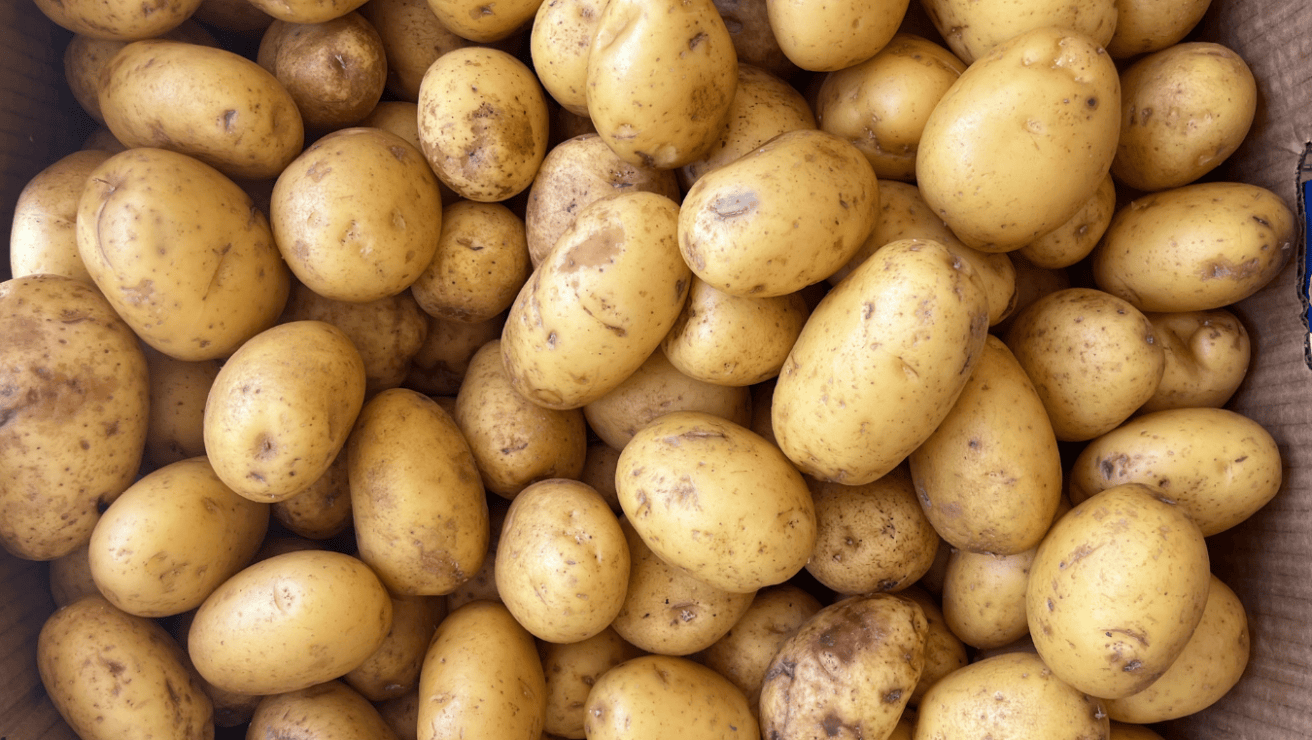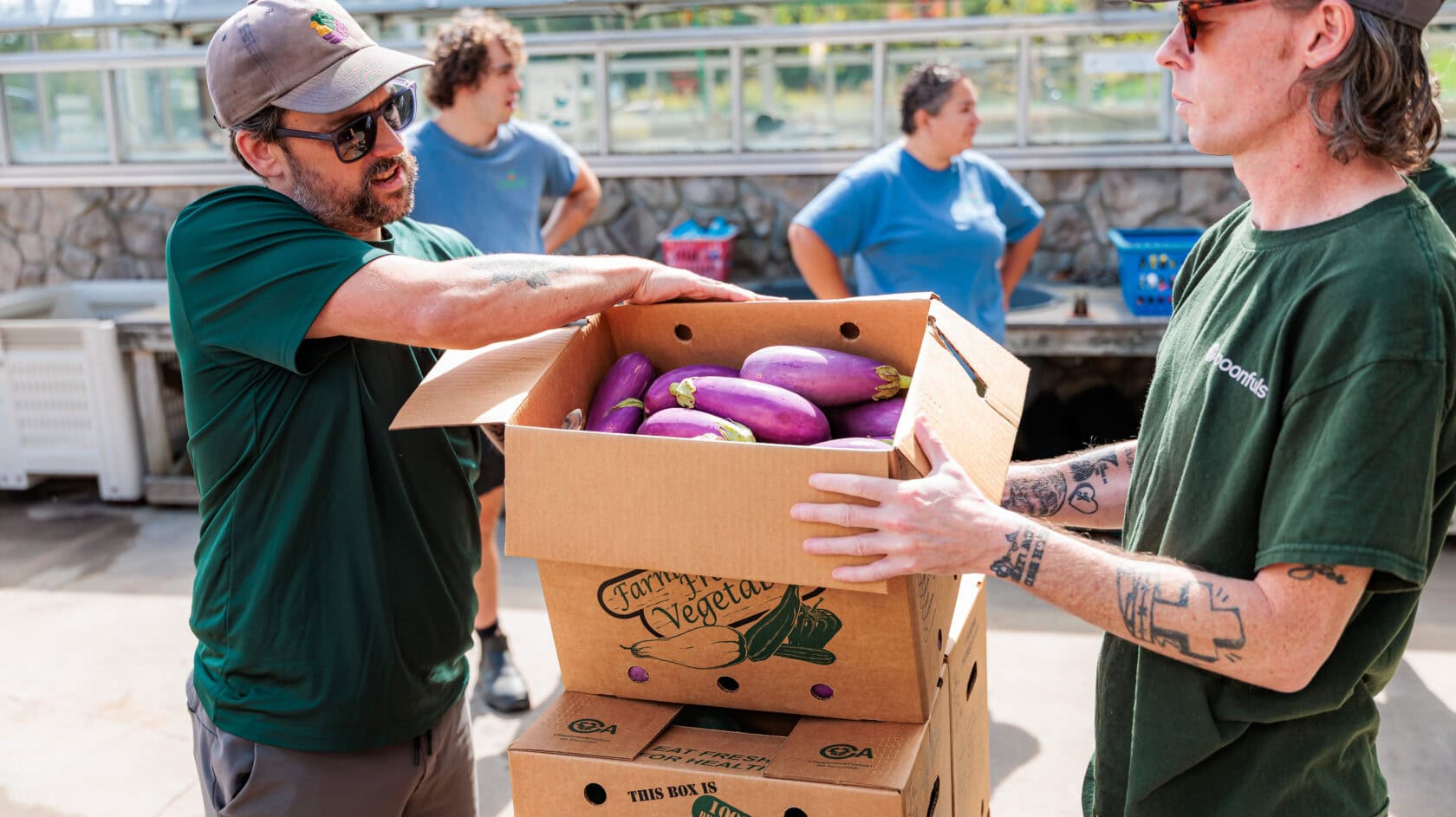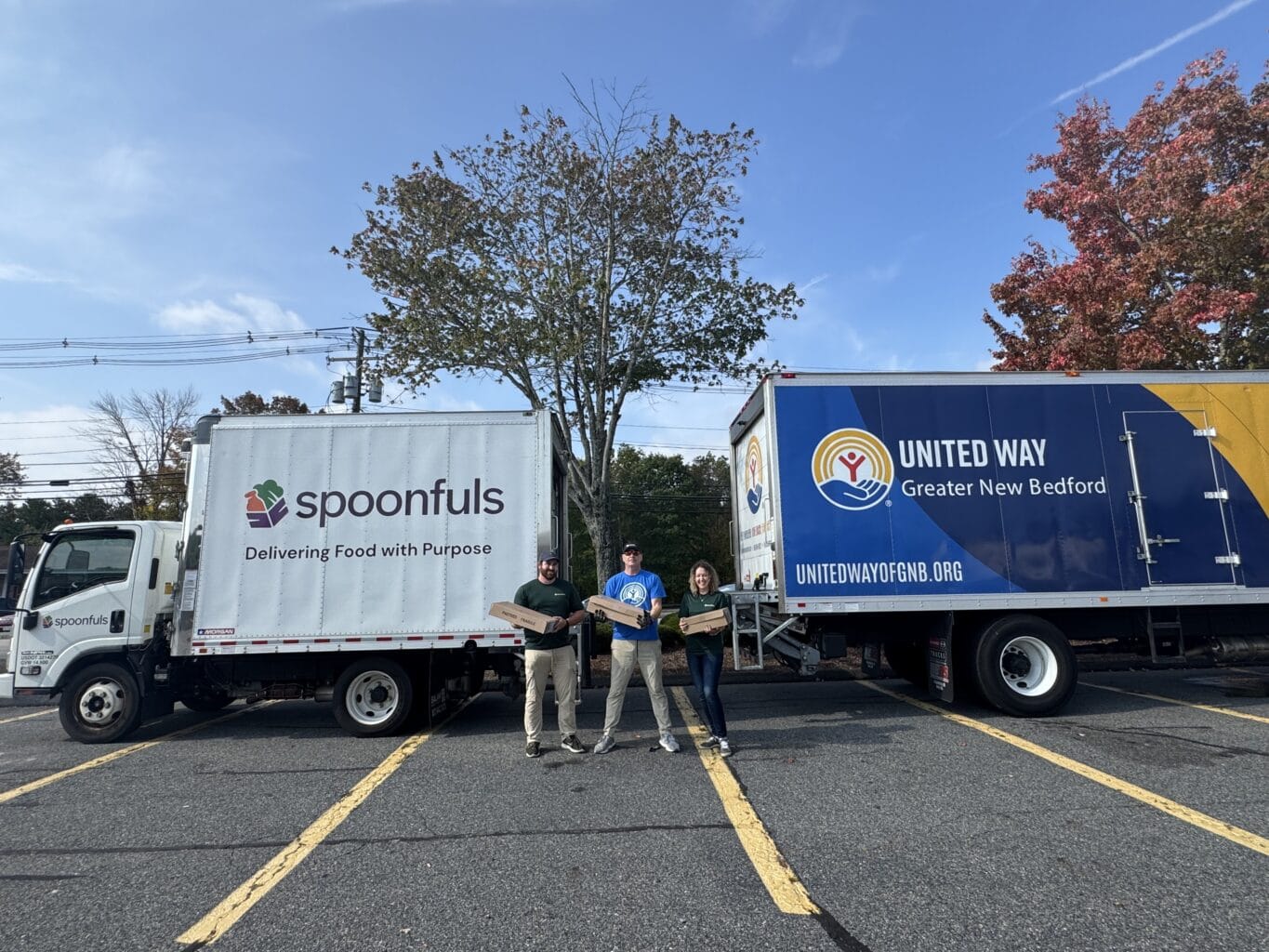Food waste math: How much food do we need to recover to feed every American facing food insecurity?

Spoonfuls exists because of a paradoxical challenge: On the one hand, here in the United States there’s a lot of good food to go around – and, on the other, people are still hungry. To be more exact, 1 in 3 households in Massachusetts is facing food insecurity, while 31% of all the food in the U.S. goes unsold or uneaten. While a small portion of this is donated to people facing food insecurity and more is recycled, a vast majority becomes food waste.
We know there’s an opportunity to recover a large portion of that unsold and uneaten food before it turns into waste, ensuring it retains its value, that it feeds people. But this leads to a question we at Spoonfuls get a lot: How much food do we need to rescue exactly to feed everyone in the United States who’s struggling with food insecurity? Let’s do the math!
The problem of wasted food in the United States
63 million tons of food each year go to waste (ReFED)
Tons to pounds:
63 million tons of food x 2000 pounds per ton = 126 billion pounds of food unsold or uneaten each year
Calculating pounds of food per day
According to Feeding America, the average meal is 1.2 pounds of food. Using that figure, 1.2 pounds X 3 meals (breakfast, lunch, dinner) = 3.6 pounds of food per day. Factoring in snacks, we’ll use 4 pounds of food per day per person in our calculations. This is also in line with estimates, calculated by calorie intake and food weight variety, that have determined 3 – 5 pounds of food per day are needed for a healthy diet.
Food insecurity in the U.S. today
47 million Americans facing food insecurity x 4 pounds of food per day x 365 days per year = 68.62 billion pounds of food needed each year to feed every American facing food insecurity.
How much food needs to be rescued?
68.62 billion pounds of food are needed each year to feed every American facing food insecurity ÷ 126 billion pounds of food unsold or uneaten in the U.S. each year = Rescuing 54% of all unsold or uneaten food in the United States would be enough to feed everyone facing food insecurity in the United States today.
Note: This amount of food needed is likely an overestimation of what we actually need to feed everyone facing food insecurity, because, food insecurity isn’t as simple as a person needing food assistance for every meal they eat throughout the year. Of course, there are people who do need that assistance, but others may just need support for a few months while they apply for jobs after being laid off. Others may be able to afford breakfast and lunch but need help putting dinner on the table. Every situation is unique. For the purpose of this thought exercise, we’re leaning into the over-estimated figure because it’s the most accurate number we have, and, allows us to be sure we’re covering all meals that are needed in our statement.
This is critical! All food is edible at some point, and while some of it may not ultimately be “recoverable” (due to weather, logistics, etc.), if we could recover just over half of what’s going unsold and uneaten in the U.S., we could feed everyone here facing food insecurity. Doing this math is a good exercise, showing us that hunger in the U.S. is a solvable problem. Food recovery is one tool we have to tackle it.
This is in line with USDA, EPA, and ReFED goals, which are all set on achieving a 50% food waste reduction by 2030 through prevention, rescue (what we do), and recycling methods. We can both feed people with excess food and minimize that excess in the first place – and we know there’s even more room to cut down on our collective food waste.
There’s a lot of room for improvement, and we look forward to supporting national food waste reduction efforts through our food rescue work here in Massachusetts.
News & Blog



